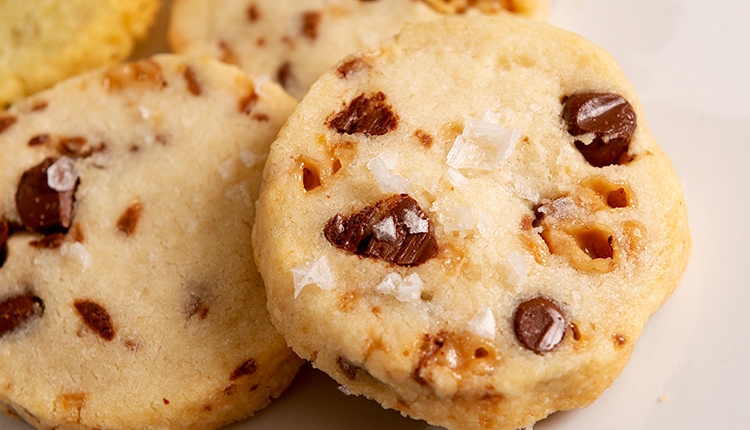I have loved shortbread cookies since I was a kid. I love sugar, but I may love butter more. Shortbread is like the best of both worlds. I remember eating Archway shortbread cookies; all of my grandparents lived in Boonville, and for many years Archway maintained a plant there. It was not until I was an adult that I found out shortbread could be flavored and lean more towards savory with the addition of herbs and other flavorings.
Base
Flour, sugar and butter. That’s it! There can be a few other flavoring items depending on what you want your end product to be. The “short” in shortbread or shortening refers to shortening the gluten strands. This was traditionally done with butter or lard. In early 1900 an alternative to saturated fat using vegetable oil was invented. Shortening and margarine lack much of the flavor but have brought their own set of issues over the years. Get the highest quality of butter you can find for the best tasting cookies, add a little salt to enhance the flavor (leave out if it is salted butter).
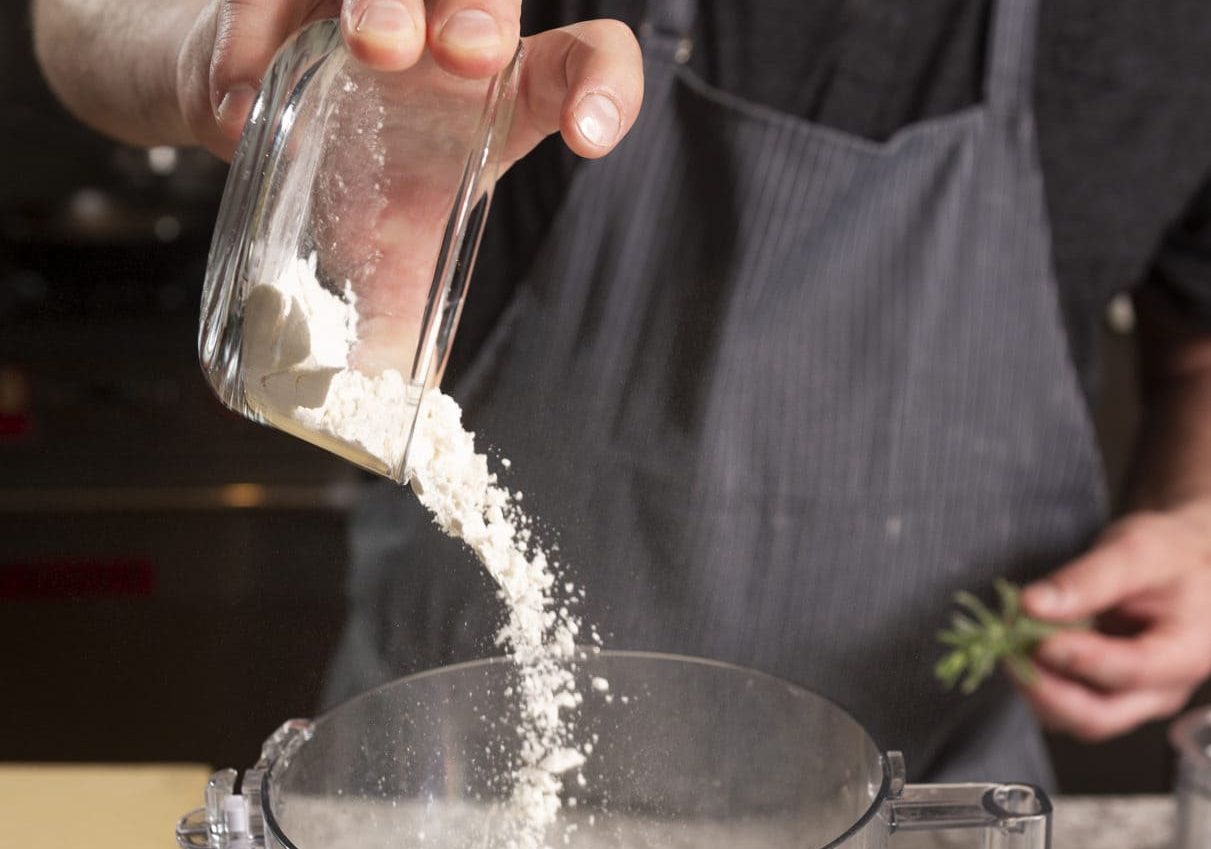
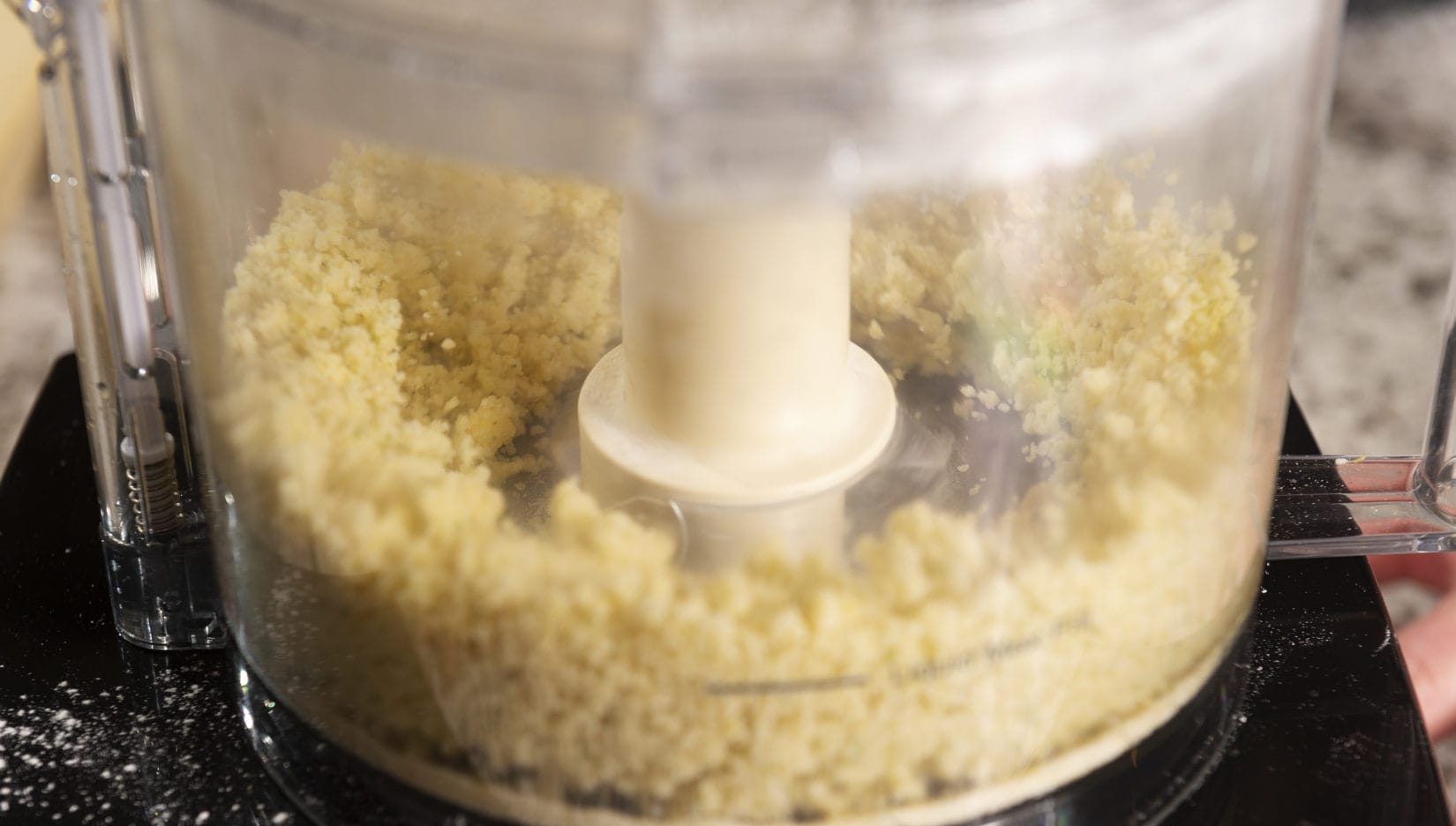
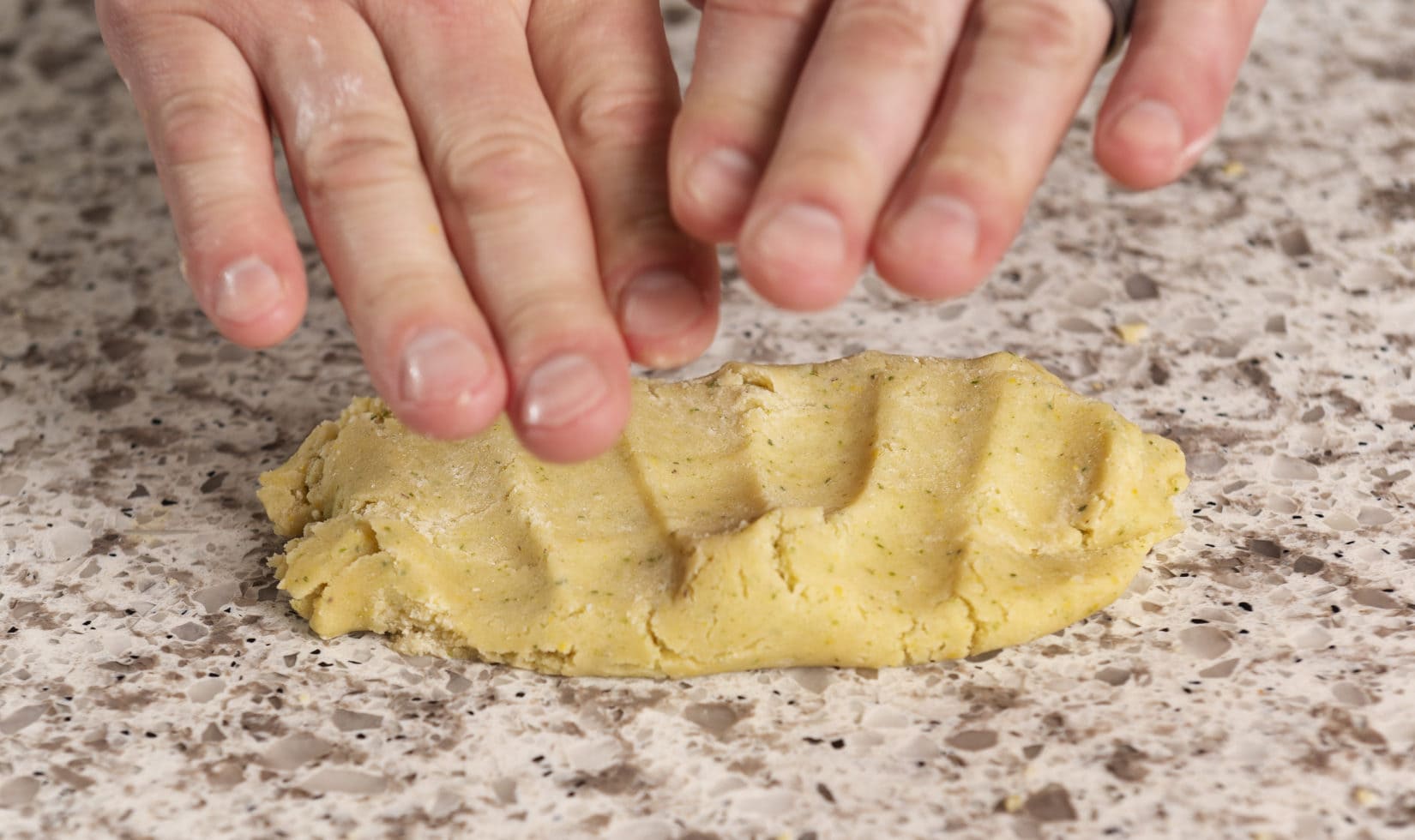
Method
Food Processor
This is my favorite method. If you want to add herbs or other flavorings, they can easily be added and chopped with the herbs. It will also do a very small amount allowing you to make multiple mini-batch flavors. This method also cuts the dough into small pieces and does very little in gluten development. Pulse dry ingredients (including flavoring) until well blended. Add butter and pulse until butter is finely chopped and starts to warm, making the mixture start to clump. Remove from the food processor onto floured counter and knead a few times to form a mass.
Mixer
Use the paddle attachment to cream softened butter and sugar together (depending on the size of your mixer), you may need to do a double or triple batch to work effectively with your size mixer. Once the butter and sugar are smooth and fluffy, add flour and salt, mix a few times until just incorporated. Remove from the mixing bowl onto floured counter and knead a few times to form a mass.
By Hand
Use a large bowl and a whisk to cream softened butter and sugar together. Once the butter and sugar are smooth and fluffy, add flour and salt and mix slowly with the whisk until incorporated. Remove from the bowl onto floured counter and knead a few times to form a mass.
Flavoring
You can flavor with just about any herb, spice or other flavoring agents. Be careful with liquid — too much could overdevelop the gluten and possibly make the cookie tough. Herbs, zest and spice can be added with the flour and chopped in with the flour. Combinations also work great, try something new. The worst that can happen is that you make a dozen mini only mildly delicious cookies. When you are adding a flavoring, think of something that is solid and might hold up more or release flavor during the bake (I prefer citrus zest over citrus juice). You can also add larger chunks of nuts, fruit or chocolate into the dough, or to the outside of the dough before it bakes. You can also dip the baked cookies into tempered chocolate or chocolate bark then into nuts or fruit for them to stick to the outer edge or corner. Single flavors or combinations are great. If you want to go a little more savory, you can cut back a hair on the sugar and add a little more salt.
Some flavor ideas include: lime, orange, cheddar, lavender, parmesan, lemon thyme, gin cardamom, caramel chocolate, chocolate toffee and rosemary lime mezcal.

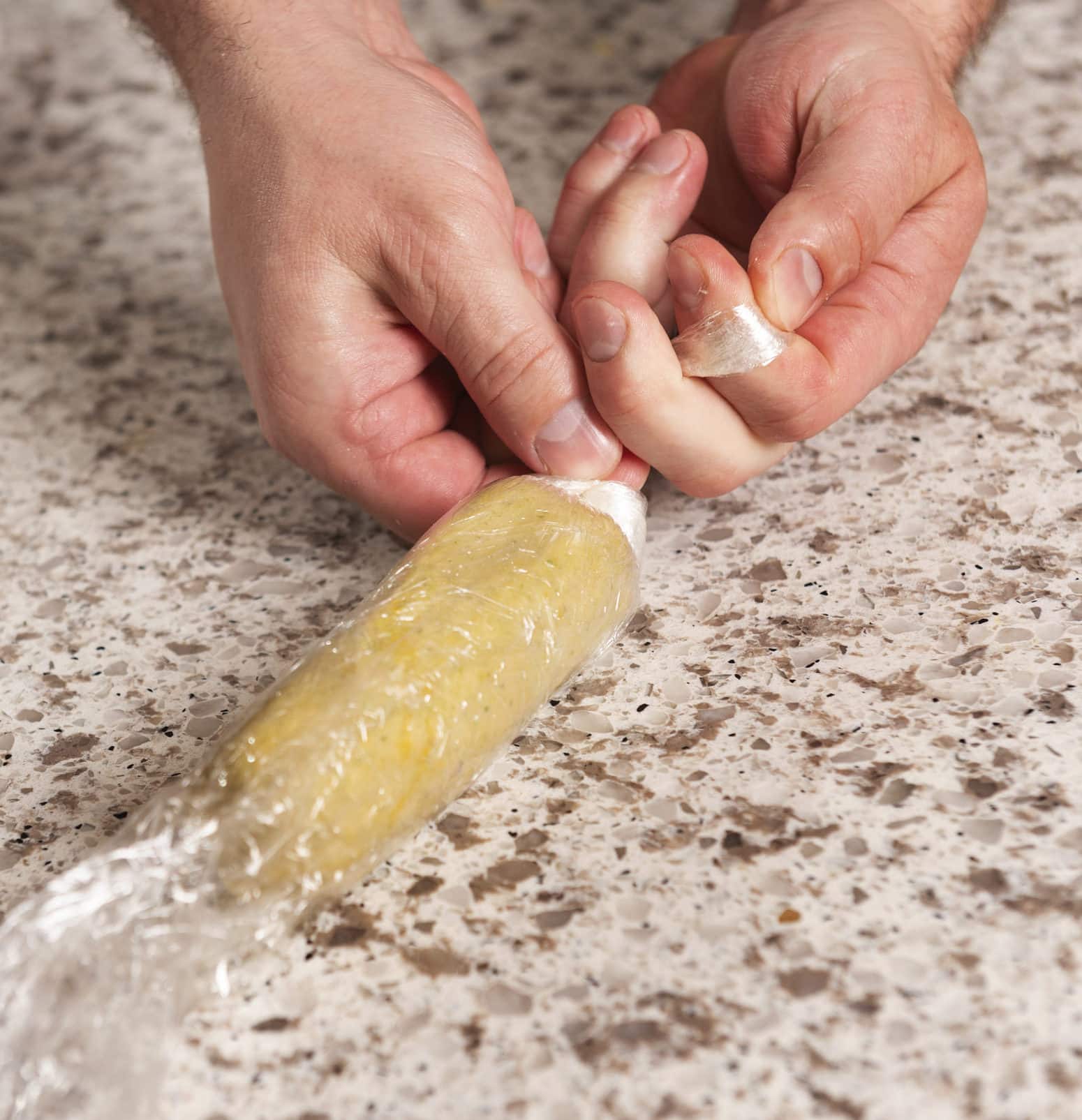
Shape
There are a variety of ways to shape your shortbread. Some methods bake them in a pan, flatten to about ¼ inch, and then slice once they are baked, but still hot. Some roll them out like sugar cookies and cut them with a cookie-cutter. You can pipe them into little swirls. Some just plop the dough onto a baking sheet similar to other cookies. I prefer making the cookies into a tubular shape and cutting them. That way they can be kept in the refrigerator for 3-4 days or frozen for a few months until shortbread cookies are needed. You can use wax paper, parchment or plastic wrap. A foot and a half of wrap with the dough in a slightly tubular shape will allow you to roll the dough up tightly and tie the ends. I like to hang it off the edge of a shelf in the refrigerator so it does not get a flat side. You can start to smooth and shake it a little easier as it starts to cool. It will need to be in the refrigerator 1 hour to overnight to set up enough to slice well.
Bake
Remove and slice into ¼ inch to ½ inch slices and place onto a buttered baking sheet or one lined with parchment or a non-stick baking mat. Keep cookies about 1 inch apart. If you want, you can dock (poke holes) with a fork about ¾ of the way into the cookie in 3 or 4 sets. This leaves a very traditional pattern and helps them bake evenly. Docking does not work well for cookies that have large chunks of filling. Bake at 325 degrees convection (350 conventional) for 10 to 12 minutes rotating about halfway through, just until there is a slight amount of brown on the edges. Remove from the oven and cool to room temperature.
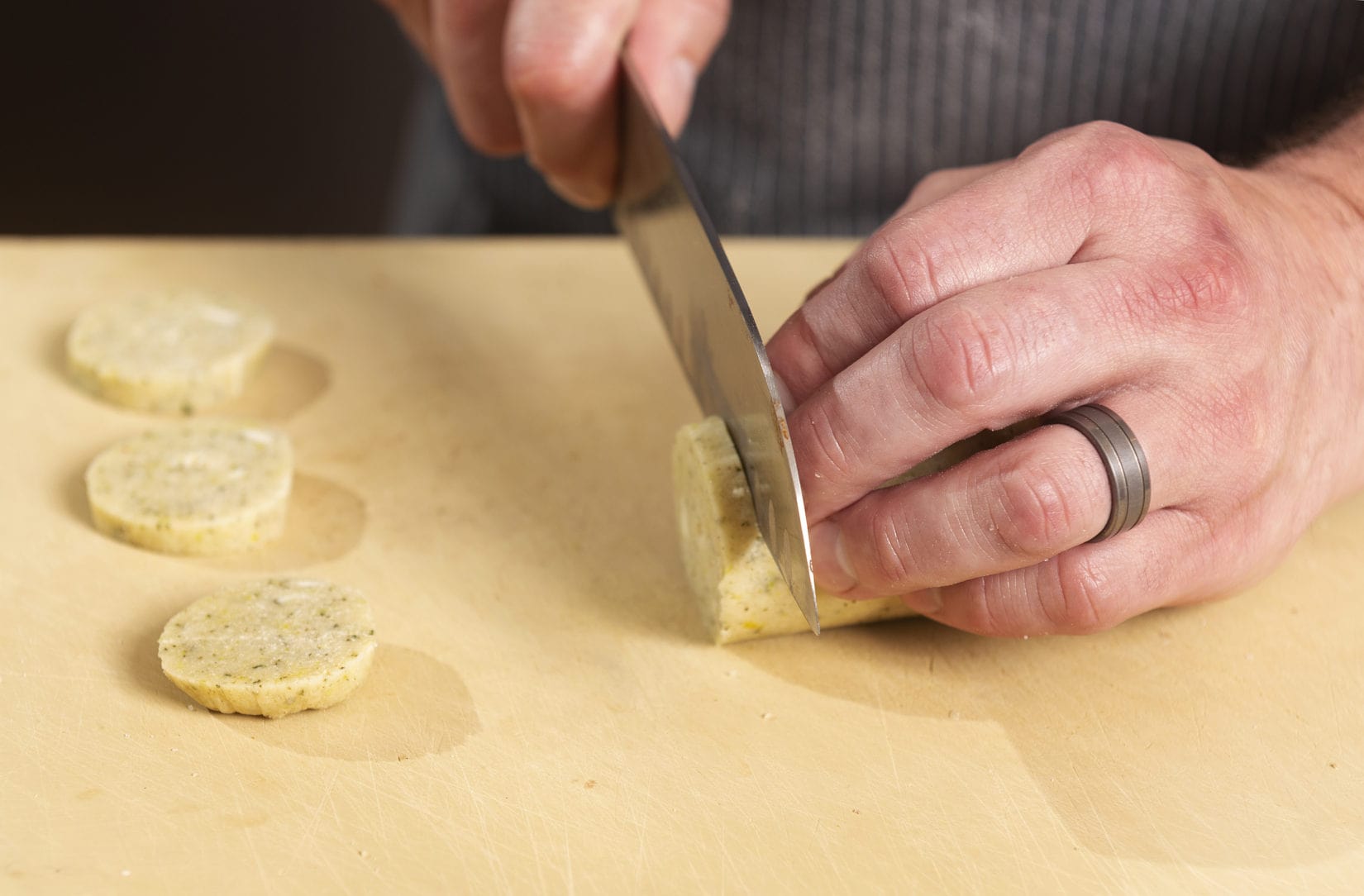
Mini-Batch Shortbread
Makes 10-12 Cookies
Ingredients
1/4 teaspoon kosher salt, or 1/8 teaspoon table salt
2 tablespoons granulated sugar
2 ounces of unsalted butter (4 tablespoons)
Food Processor
Mix dry ingredients and flavorings in the food processor bowl. Blend until ingredients are mixed and flavorings are cut to the desired size. Add the butter and blend until the butter is cut into mixture and butter starts to warm. When the butter starts to warm the mixture will start to clump together and become off-center and wobble, this is when the dough is forming. Open the top and squeeze a little of the mixture together. It should easily form a dough and hold together when compressed. Remove from the bowl and knead on floured counter until smooth. This is also when ingredients such as chocolate chunks, nuts, or toffee pieces can be mixed in.
To Shape
Make a double layer of plastic wrap or one layer of wax paper or parchment about 18 inches long. Roll the dough into a tube and place it into the center. Twist-up other ends and chill in the refrigerator for at least 1 to 2 hours until firm. Remove and slice into ¼ inch to ½ inch slices and place onto a buttered baking sheet or one lined with parchment. Keep cookies about 1 inch apart.
To Bake
Bake at 325 degrees convection (350 conventional) for 10 to 12 minutes rotating about halfway through, just until there is a slight amount of brown on the edges. Remove from the oven and cool to room temperature.
Brook Harlan is a graduate of the Culinary Institute of America in Hyde Park, New York. He is a culinary arts instructor at the Columbia Area Career Center.

